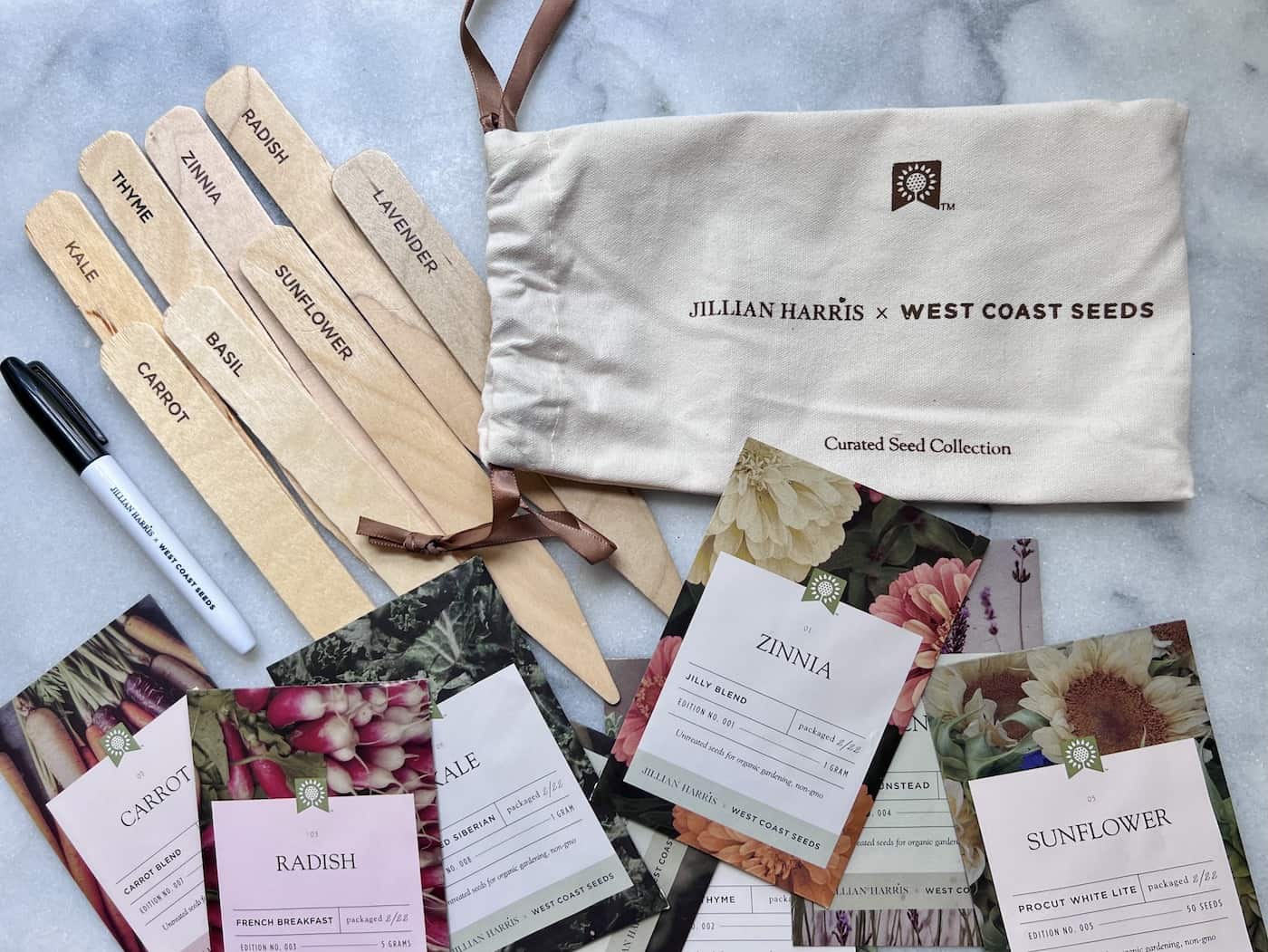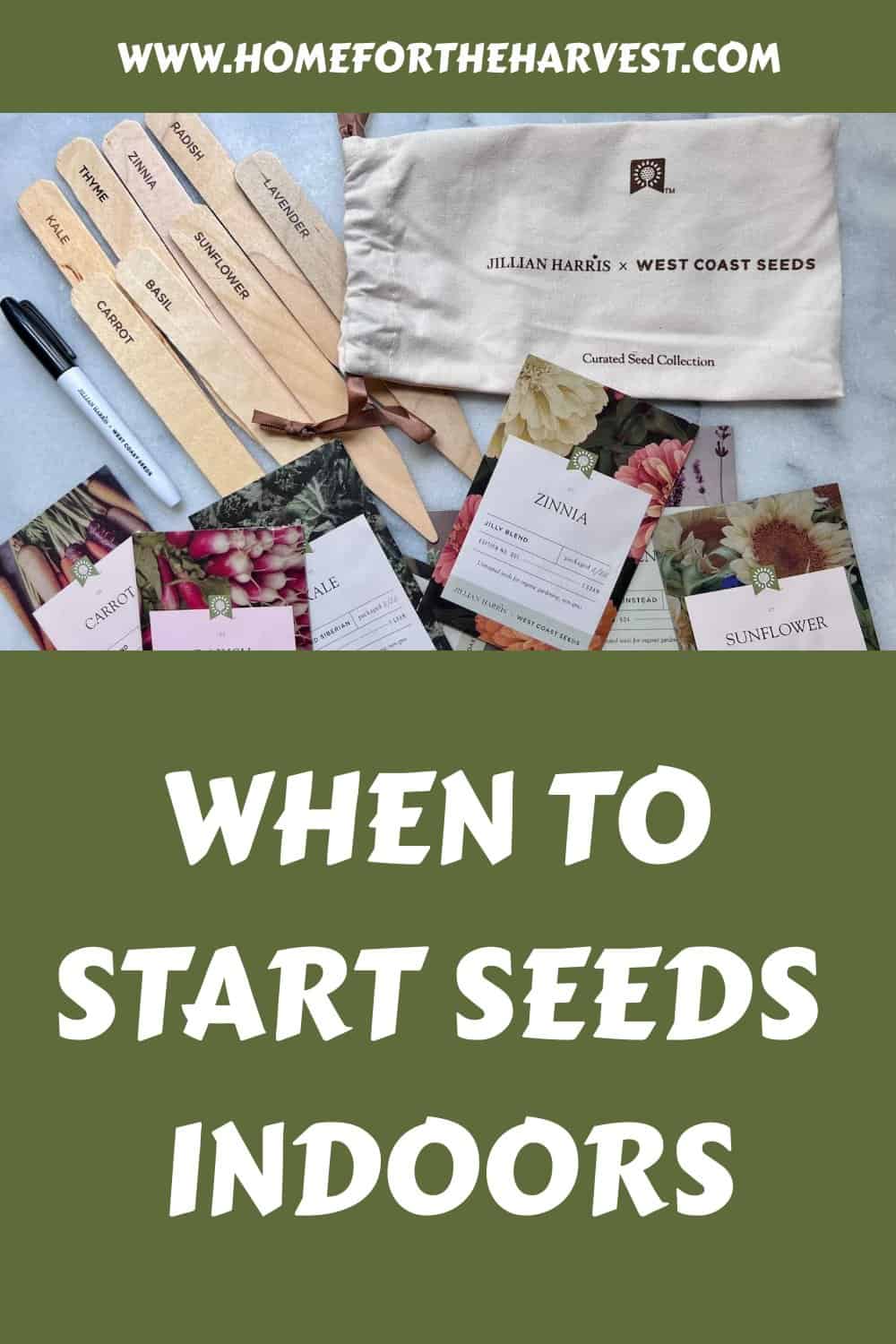Are you eager to start your garden this year, and wondering when to start seeds indoors? It all depends on what you’d like to grow and when your last frost date will be in order to determine which plants are best suited for indoor sowing.
This blog post provides insight into what types of seeds should be started 10-12 weeks before the last spring frost; 7-9 weeks before; 5-6 weeks before; and 4-5 weeks before – so grab a pen and paper (or open up that note-taking app.) as we explore how you can start seeds indoors at just the right time.
When to start seeds indoors depends on your last frost date
If you want your garden to thrive, it’s important to know when to start planting. The key factor in deciding when to start seeds indoors is knowing your local last spring frost date. And if you’re not yet sure which seeds to start indoors and which ones to direct sow, here’s a chart showing which common vegetables to direct sow or transplant.
Your local last spring frost date can vary significantly from year-to-year, so it’s important that you check the weather forecast each year around the estimated date for a more real-time estimate of when the danger of frost has passed. This will help ensure that your plants are not damaged by cold temperatures or late frosts after they have been planted outside.
Knowing your local last spring frost date also helps determine how long before the last spring frost you should begin starting seeds indoors. Generally speaking, most vegetable and flower seedlings need 4-6 weeks of indoor growth before they can be safely transplanted into the garden beds outside without fear of damage from cold weather or late frosts.
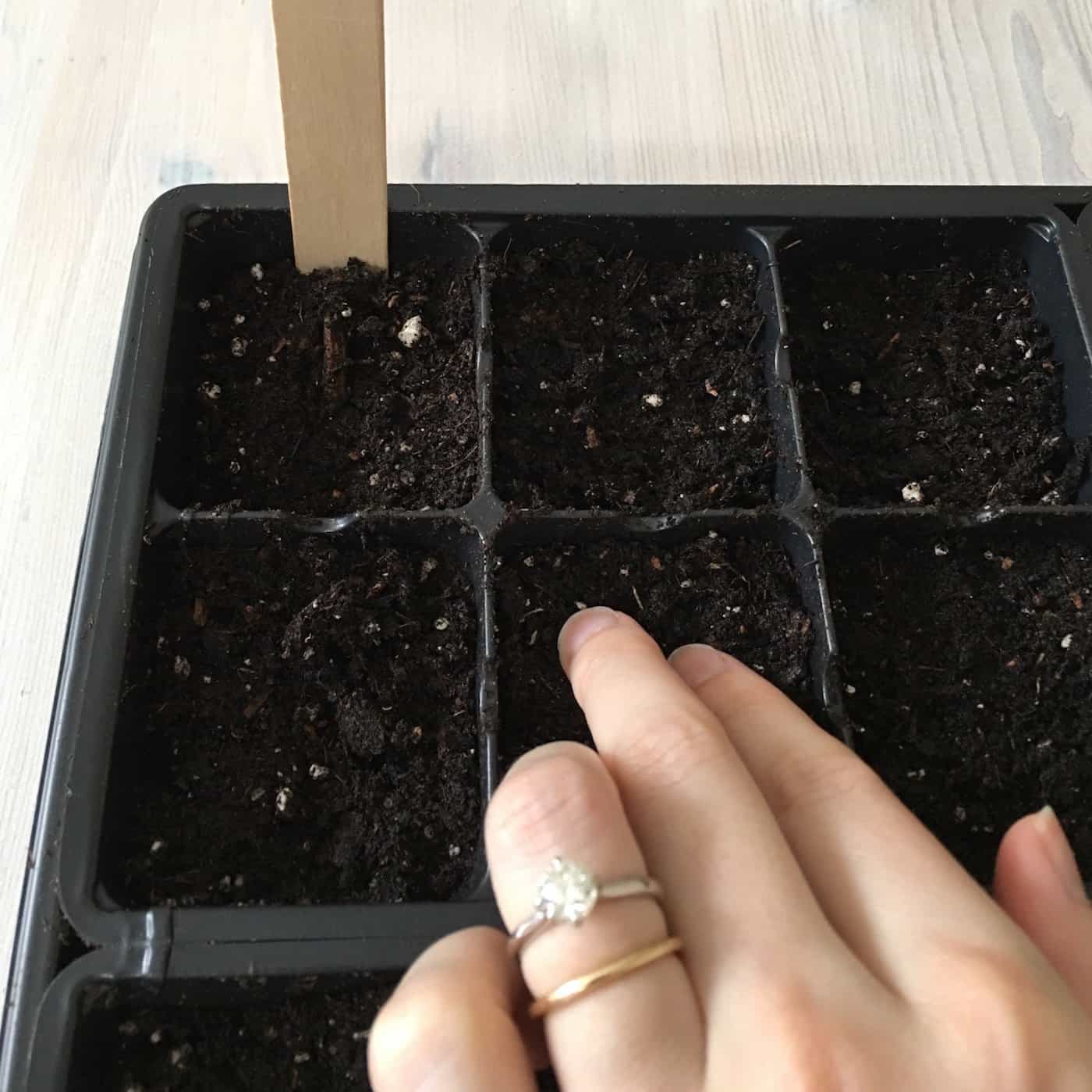
Seeds you can start indoors 10-12 weeks before the last spring frost
When it comes to starting seeds indoors, timing is everything. Knowing when to start your seeds can make or break a successful garden. If you’re in North America, the key factor for determining when to start your seeds indoors is knowing what the last spring frost date is for your area.
If you live in an area with a long growing season and mild winters, then 10-12 weeks before the last spring frost date may be ideal for starting some of your favorite vegetables and flowers from seed. Some examples of plants that do well when started 10-12 weeks before the last spring frost include celery, eggplant, leek, onion, pepper, and lisianthus.
Celery takes about 70 days from planting until harvest time so plan accordingly if you want fresh celery on hand during summer months. Eggplants need around 80 days from planting until they are ready to pick while leeks take around 90 days so both should be planted early enough that they have plenty of time to mature before summer heat sets in. Onions also need at least 90 days but many varieties will take up to 120 days so plan ahead if onions are part of your garden plans this year. Peppers usually require between 60-90 days depending on variety and lisianthus needs around 100 days from sowing until bloom time so keep these timelines in mind when planning out your indoor seed starts this winter.
Starting seeds indoors 10-12 weeks prior to the last spring frost gives them plenty of time to get established before being transplanted outdoors into their permanent home once all danger of cold weather has passed. This way, you can enjoy homegrown veggies earlier than ever and reap the rewards of your hard work.
Seeds you can start indoors 7-9 weeks before the last frost
Starting seeds indoors 7-9 weeks before the last frost date gives plants plenty of time to germinate and grow strong enough for transplanting into the ground or larger containers when temperatures are warm enough.
Lettuce is one of the most popular vegetables that can be started indoors during this timeframe. Lettuce grows best in cooler weather, so getting them established early will give you a head start on harvesting crisp greens throughout the season. While loose-leaf varieties are generally direct seeded outdoors, types that form a head are generally started in flats and transplanted out. If you harden off the lettuce seedlings, they can usually go outdoors well before the last frost.
Globe artichoke is another vegetable that does well with indoor seed starting 7-9 weeks before the last frost. It takes some patience as these large plants take up to two years from planting until harvest but they are worth it. Parsley also does well when started indoors at this time and makes a great addition to many dishes both fresh and cooked.
For those looking for more color in their gardens, coleus, petunias, and salvia all make beautiful additions with vibrant blooms lasting through summertime heatwaves if cared for properly. Coleus comes in many varieties ranging from bright reds and oranges to deep purples while petunias come in almost every hue imaginable – perfect for creating unique combinations within your flower beds or container gardens. Salvia has long been used as an ornamental plant due to its tall spikes of purple flowers which attract pollinators like bees and butterflies making it beneficial for other parts of your garden too.
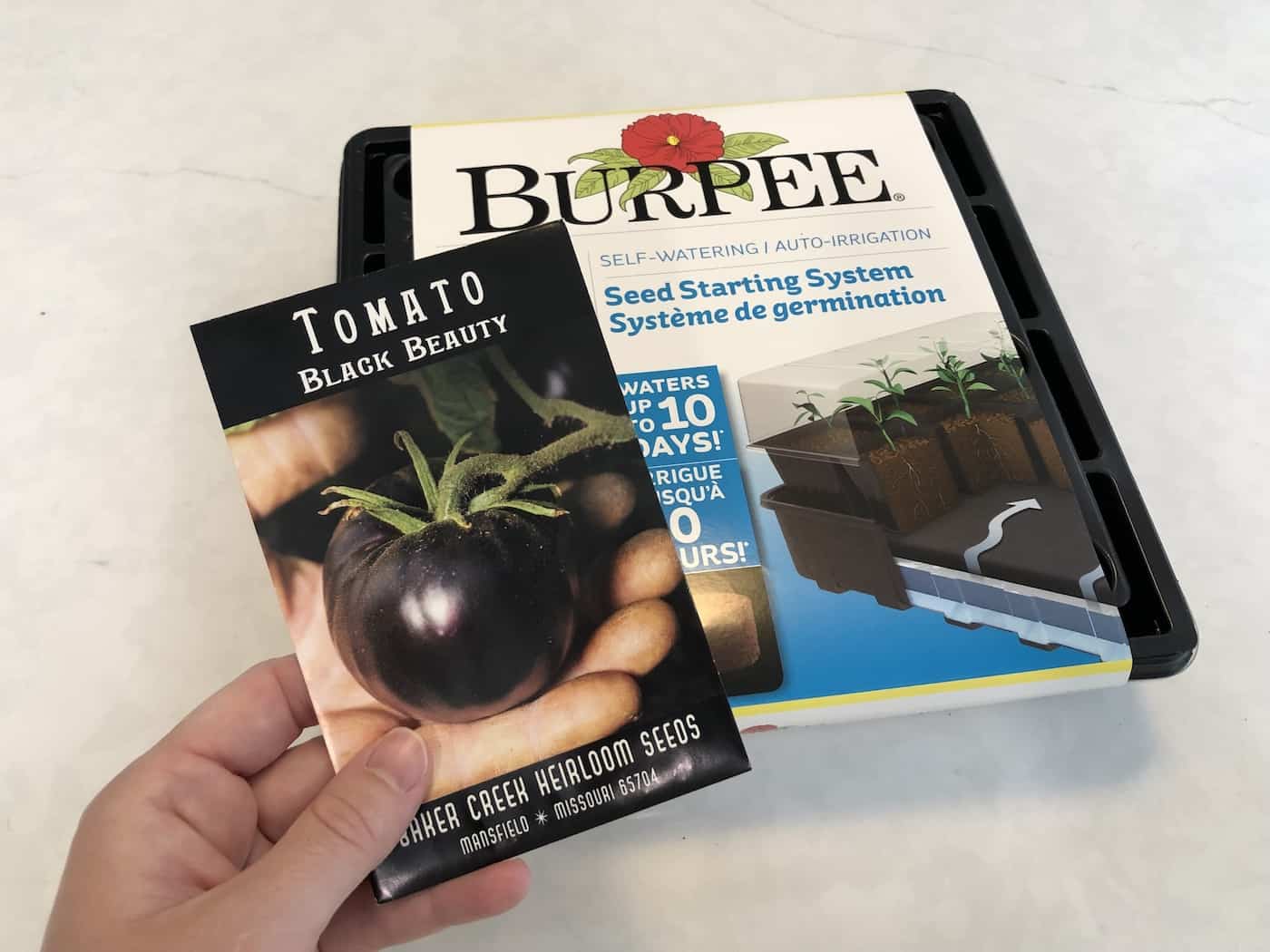
Seeds you can start indoors 5-6 weeks before the last frost
Starting seeds indoors five to six weeks before the last spring frost can be a great way to get a jump start on your garden. It’s important to know which plants you should start at this time, and how best to do it.
Tomatoes are one of the most popular vegetables that can be started indoors five or six weeks before the last frost date. Tomato seedlings need about 10-12 hours of light per day, so if you’re using artificial lighting make sure it’s bright enough for them. When planting these seeds, use a soil mix specifically designed for starting seeds and keep them moist but not soggy until they germinate. Once they have sprouted, thin out any weak seedlings. Here’s a guide on when to plant your tomato seedlings outdoors.
Cauliflower is another vegetable that can be started indoors around 5-6 weeks before the last frost date. Plant cauliflower seeds in a well-draining potting mix and keep them moist until germination occurs in 7-14 days. After germination, provide plenty of light – either natural sunlight or artificial lighting – for 12 hours each day while keeping temperatures between 65°F and 75°F during the day and 55°F at night. When transplanted outdoors after all danger of frost has passed, give cauliflower plenty of space as it needs room to grow without competition from other plants nearby.
Starting seeds indoors 5-6 weeks before the last spring frost is a great way to get an early start on your gardening season. With just a few simple steps, you can be well on your way to having healthy plants ready for transplanting in no time. Now let’s take a look at which seeds you can start indoors 4-5 weeks before the last spring frost.
Seeds you can start indoors 4-5 weeks before the last spring frost
It’s time to start thinking about your garden. If you want to get a jump on the growing season, it’s important to know when and what seeds you can start indoors 4-5 weeks before the last spring frost. Starting seeds indoors is an easy way for any gardener, beginner or expert, to get a head start on their gardening projects.
Basil is one of the most popular herbs that can be started indoors 4-5 weeks before the last spring frost. Basil has many culinary uses and adds flavor and color to dishes like pesto, salads, soups, and sauces. Planting basil from seed will give you more variety than buying plants from a nursery or store. When starting basil from seed indoors make sure you use a well-draining soil mix in individual pots or trays with drainage holes as they don’t like soggy roots.
Cucumbers are another vegetable that can be started indoors 4-5 weeks before the last spring frost date. They do well when direct seeded vs seeded indoors, but in cooler climates may be sown indoors. Cucumbers are relatively easy to grow but require warm temperatures so starting them early gives them enough time to mature before summer heat sets in. Make sure your cucumber starts have plenty of light as this helps encourage strong stem growth which leads to healthier plants overall when transplanted outdoors later in the season after all danger of frost has passed.
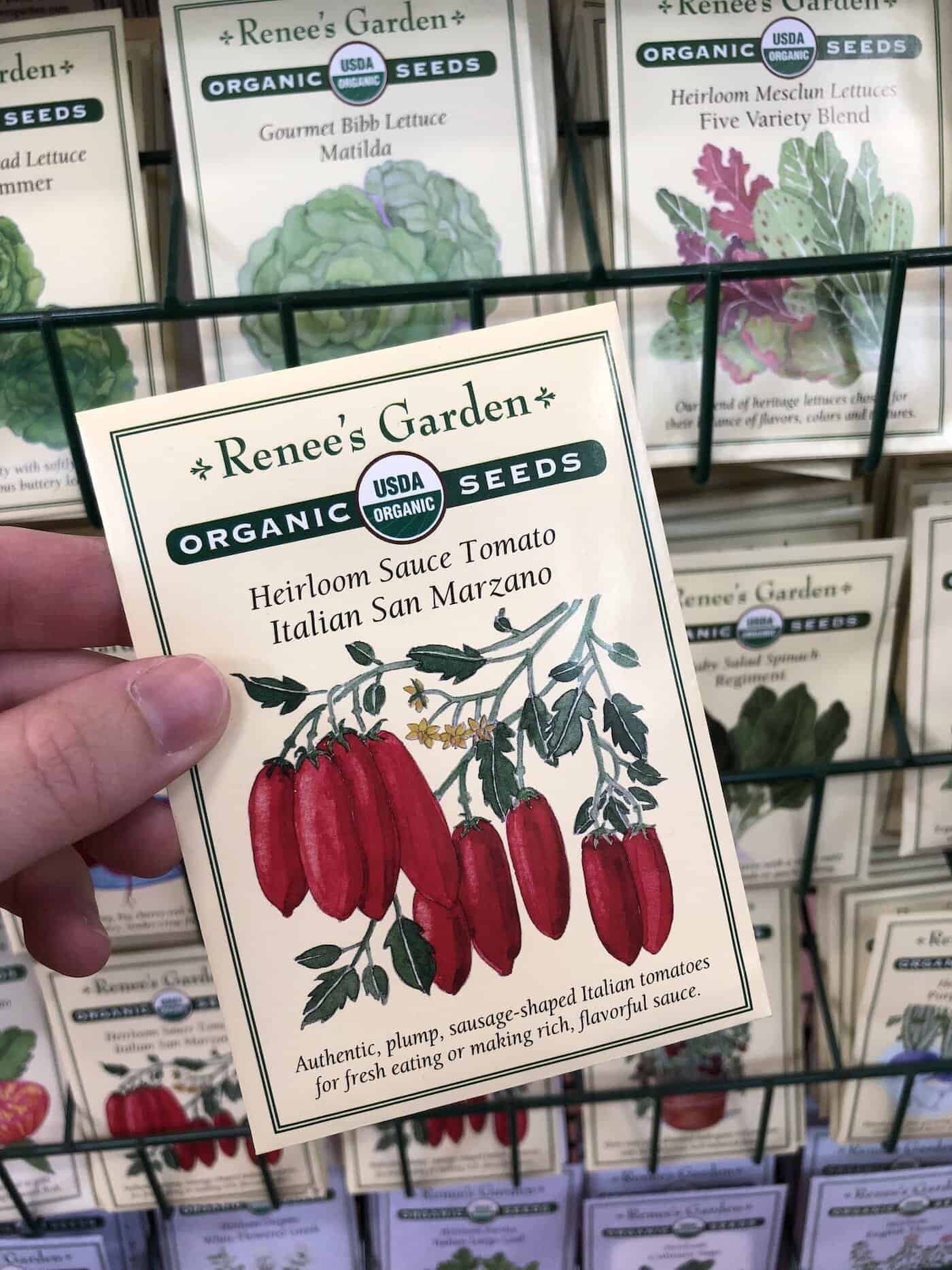
FAQs about when to start seeds indoors
What month do you start seeds indoors?
The best time to start seeds indoors depends on the type of plant you are growing and your local climate. Generally, most vegetable and flower seeds should be started 6-8 weeks before the last expected frost date in your area. This will give them enough time to grow large enough for transplanting outdoors when temperatures warm up.
If you’re unsure about when this is, check with your local garden center or extension office for more information. It’s important to remember that different plants have different needs so it’s always a good idea to do some research before starting any seed indoors.
Can you start seeds inside too early?
Yes, it is possible to start seeds inside too early. This is called “rushing the season”, and is very common! Starting seeds too early can lead to a small jungle growing inside your home. Seedlings may need to be potted up into bigger containers several times before they go outdoors for good. Additionally, if temperatures outside are still too cold for young plants, they may not be able to survive transplanting into the garden.
What seeds should not be started indoors?
It is generally not recommended to start seeds indoors that do not transplant well. These include corn, squash, and pumpkins. It is best to wait until the weather warms up before planting these types of seeds outdoors directly in the garden bed. Finally, it is important to remember that starting certain trees or shrubs from seed may take several years before they are ready for transplanting into the landscape.
What temperature should you start seeds indoors?
The ideal temperature for starting seeds indoors is often between 18-21°C (65-70°F). Here’s a chart showing the optimal temperature range of some common vegetable seeds for their germination.
It’s important to keep the soil at a consistent temperature, as fluctuations can cause poor germination. Additionally, keeping the soil moist but not overly wet will help ensure successful seed growth. To maintain an even temperature, consider using a heat mat or other heating device. With proper care and attention to detail, you can give your seeds the best chance of success.
Before you go…
Starting seeds indoors is a great way to get your garden off to an early start and ensure you have the best possible harvest. It’s important to know when to start seeds indoors based on your last frost date, as well as which types of seeds are best suited for each time frame. With some planning and research, you can easily learn how to start seeds indoors with success. So don’t be afraid – get out there and give it a try. You’ll be glad you did when you see those beautiful plants growing in no time at all.
Resources
- The best garden catalogs for seeds, live plants, tools, and supplies
- Types of seeds: Open-pollinated, heirloom, organic, hybrid, & non-GMO
- Best seeds for winter sowing
- Winter sowing guide for planting seeds outdoors in cold climates
References
- Dates to start vegetable and flower seeds indoors
- Knowing when to start planting seeds
- Gardening: January is planning time for starting seedlings indoors
Need more info?
Are you interested in learning more about when to start seeds indoors Here are our best articles about it!


